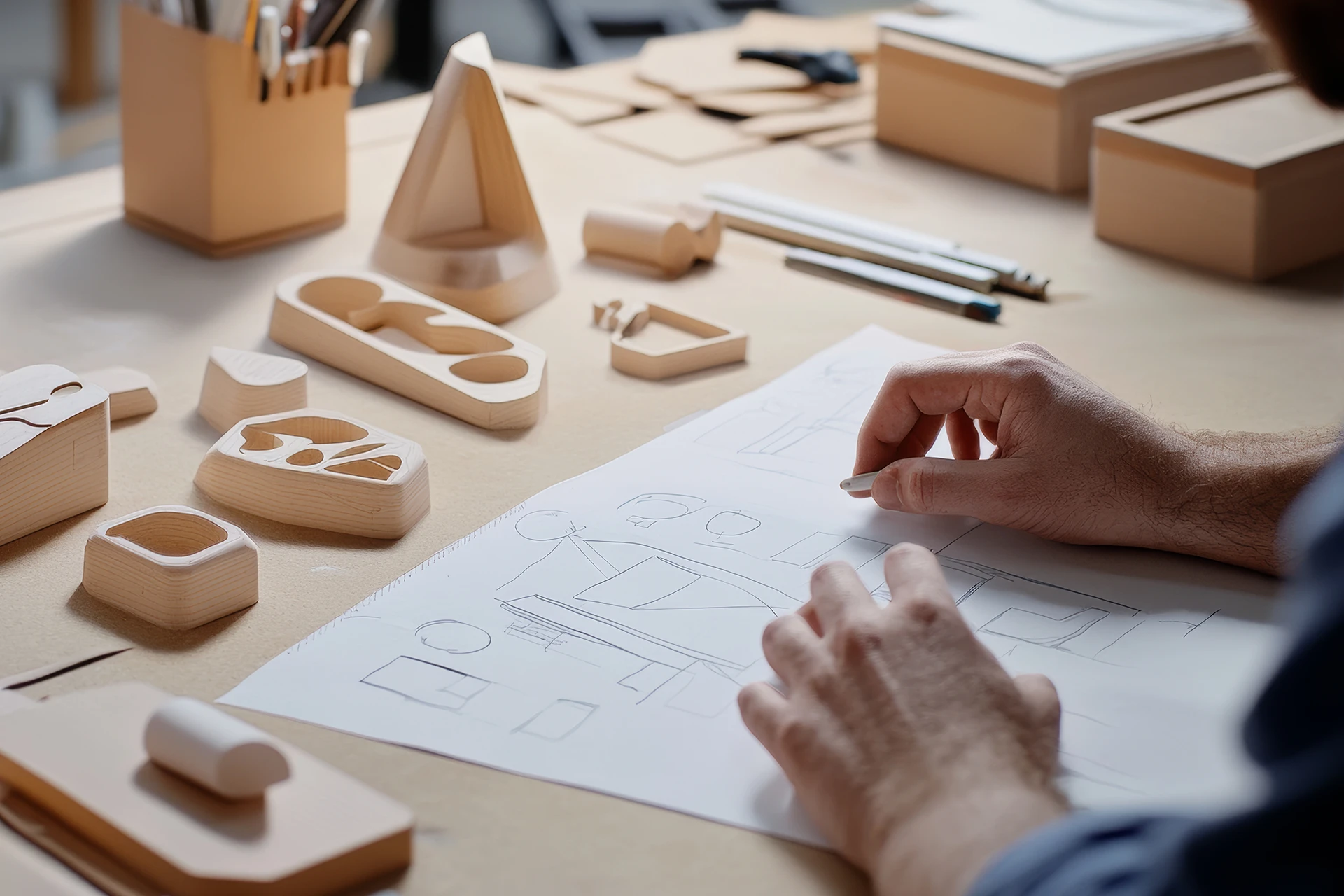DSGNJAVA
From Concepts to Execution:
Designing a Perfect Startup – Part 3
July 15, 2025
Design is more than just aesthetics. It’s about thinking through and building the right experience for your user, about constant innovation, about re-inventing approaches to bring and keep the user in the centre. Design thinking brings a company closer to its users by creating a deeper understanding; create products and services that are aligned with them. And for design thinking to succeed, it needs a buy-in from the founders and top management so that it can be integrated across all the processes.
Concept Validation & Prototyping
Hyper-innovation calls for hyper-iterative design processes. Continuous, rapid prototyping based on insights from user behaviours is a critical phase in design. It helps validate design concepts and offers immense scope for real-time refinement of a product/ service. This though requires a complete buy-in from the management team due to its time-consuming process— process that results in an accurate mapping of user behaviour. The design team should be open to iterations, risks, and continuous learning— until the approach becomes a way of thinking and not just a one-time effort.

Most of the businesses— especially startups are under pressure to do a quick launch of their product. The Time to Market (TTM) pressure skyrockets shrinking the thinking phase substantially. Products launched without an in-depth understanding of the user expectations, behaviour and experience are most likely to fail. A deeper analysis would point that such businesses plunge straight into the development phase of a product citing their capability or minimum capital or stringent TTM.
On the contrary, a design-led organisation obsesses over its users, empathises with them and designs solutions for them. Integrating the design thinking process into operations fundamentally directs businesses to employ tools that create multiple bridges to understand their users’ needs and wants— iteration, testing, and validation as a way of product development.
Smart startups build and release a stripped-down version of the product and let the user behaviour insights drive the product development— to launch a much refined, complete version. This has proven to be a better strategy for creating a great product, getting traction, and determining the overall success of the it.
Ultimately, businesses have to ring in the revenues. A design-led approach has to dovetail the clearly defined business objectives. When the design thinking process is initiated, it may also refine the business objectives while helping businesses unearth hidden opportunities. The process has to be carried out to carefully achieve a balance between addressing the users’ needs as well as the business objectives.
It is important to arrive at solutions that help design a product/service to provide the best experience. Solutions that are not well thought through and produced in a hurry are bound to fail – sooner or later. Although we are living in the times of hyper-innovations with ideas sprouting all around us, the fundamentals of business remain intact. The product has to be useful. It is challenging to go beyond the initial exhilaration and work towards creating a great product. Though users have a plethora of options to choose from a product with innovation at its core has greater chances of success. And a product with overlapping features can still succeed if the user experience is unparalleled in that product category.

Resource Planning, Evaluation & Prioritization
Resource allocation for a new product development is a challenge for businesses of all sizes. It is extremely challenging for a startup. Time and money are mostly inversely available for spending and the decision-making process of early startups becomes crucial. Quite often, decisions are made under pressure to cut costs amounting to dire, unforeseen consequences ahead.
A design-led organisation is clear with its objectives and priorities. Quality time invested leads to great returns in the long run. But this equation is not immediately evident as the returns are in an intangible form e.g. equity, brand loyalty, etc.
Traditionally, companies are built to last. They are led by strong values and share an inspiring vision that help the management steer through difficult times. It aids the decision-making process. An inspiring vision and a set of empowering values brings clarity to the forefront and motivates not just the management but employees as well as other stakeholders. It can impact the operations, services, recruitments, systems and every aspect of the business. Startups today are led by an idea with an undercurrent of creating large amount of wealth through almost ludicrous valuations. Very few of these startups have an unarticulated but a powerful vision and solid business objectives. Clarity in envisioning leads to clarity in the requirement and utilization of resources. While design thinking can help map the entire business roadmap and user expectations, it is the objective vision that helps in crystallizing the strategy and the related decision-making processes for implementation.

It is important to ask: Why do you want to start the business? How is it going to make life easier for the people? What if you run into trouble midway— would you persist? What values should your business stand for? What if a situation stirs you up to compromise one of those values in return for a huge opportunity? and so on.
Management consultants have researched and written volumes about the impact of defining a clear vision, mission and values for a business to last. Uber’s promise of providing users their own private driver has helped them decide on their investments in design, technology as well as operations. Resources in terms of funds for the team, backend technology as well as frontend design are prioritised keeping in mind the best possible user experience. Additionally, there is sufficient scope for improvisation for additional features and scalability.
Mapping the product or service features crystallize the resources required for implementation. Strategize the launch of the product in order to not only acquire users but also engage them sufficiently with an unparalleled user experience to create a buzz. This helps in prioritising the resources without compromising on the quality of the final product.

Conclusion
The new age start-ups require relatively fewer resources, an invincible drive, and an innovative solution to a pressing or prospective problem to start with. Though it is a lot easier to kick-start today, it is important for the entrepreneurs/founders to understand that this journey is a grueling one and one needs (and one can) to develop a sense of self-confidence, will and grit to build the idea and succeed. A design-led approach and incorporating design thinking tools and processes in the early stages can go a long way in not only validating the concept, but also find the best solution, smartly utilize the resources, address the users’ needs, judge behaviours and pitfalls, define a vision, crystallize business objectives, establish operations and build a great product/service and a committed team.
Dream. Inspire. Empower.




